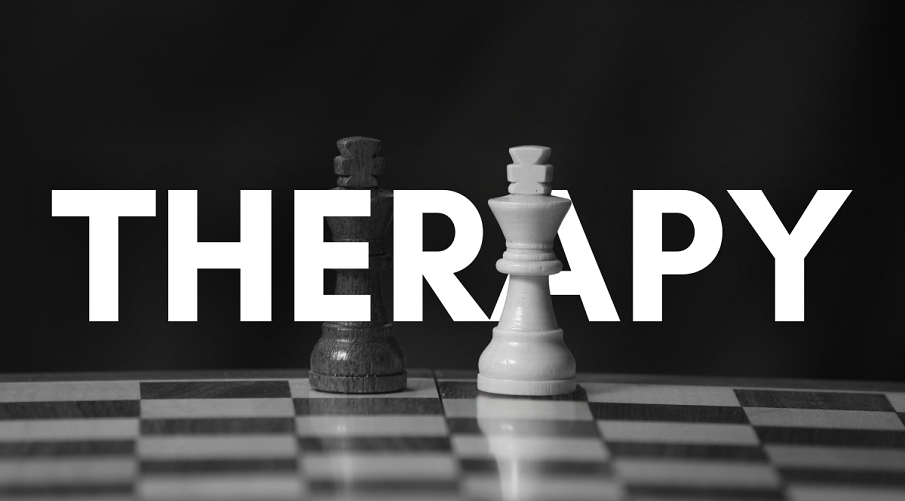In the intricate dance of life, each of us walks a precarious wire, suspended between the dualities of hope and despair, joy and sorrow, growth and stagnation.
The role of a therapist is not merely to observe this balancing act but to serve as the wire itself…
To be an unwavering support system that helps individuals navigate the highs and lows of their emotional landscape.
Just as a tightrope walker grasps the wire for stability, clients can find reassurance in the therapeutic relationship, allowing them to traverse the chasms of their experiences with renewed hope and resilience.
The Role of Therapy:

The Promise of Hope in Therapy
At the heart of this therapeutic relationship lies the promise of hope.
A therapist embodies this hope, providing a lifeline that clients can cling to as they confront the complexities of their inner worlds.
Through the delicate process of opening up layers of consciousness, therapists guide individuals to engage with their emotions, unlocking pathways to healing.
This journey is not merely about understanding, it is about experiencing the profound connection between serotonin, dopamine, and endorphins (the chemicals that illuminate our feelings of joy, reward, and fulfillment).
By helping clients navigate their emotional responses, therapists create a fertile ground for growth and transformation.
The Responsibility of the Client
However, the path to balance is not solely reliant on the therapist’s guidance.
It ultimately rests in the hands of the clients.
While therapists can offer invaluable information and insights, it is the responsibility of individuals to accept this guidance and work with it.
This dynamic relationship is built on mutual respect and understanding, where the therapist provides a safe space for clients to feel seen and heard, regardless of their current state of awareness.
Acceptance does not imply passivity, rather, it serves as a catalyst for change, allowing clients to confront their unconscious desires and aspirations.
Overcoming Distorted Self Perception
In a world inundated with social media narratives and external pressures, individuals often find themselves grappling with distorted self images and mislabeling their identities.
Age, culture, trauma, and lifestyle all play significant roles in shaping how we perceive ourselves and our potential.
A skilled therapist recognizes these factors and strives to uncover the unique strengths that each client possesses.
It is through this lens of potential that therapists can inspire clients to envision a future that transcends their current struggles.
Navigating Resistance to Change
As clients navigate their emotional landscapes, they may resist change, clinging to familiar patterns that no longer serve them.
Acknowledging this resistance is crucial, it is a natural response to the discomfort of growth.
A therapist’s role is to gently encourage clients to confront their dependencies, whether they stem from family dynamics or societal expectations.
The journey from dependence to independence is not a linear path, it is a complex process that requires patience, compassion, and understanding.
With the therapist as a guide, clients can take the brave steps necessary to embrace their autonomy and reclaim their identities.
The Transformational Power of Therapy
Therapeutic experiences are not merely about achieving bliss or spiritual advancement, they invite individuals to confront their pain, acknowledge their fears, and cultivate resilience.
It is essential to recognize that true change often occurs outside of our comfort zones, in the very spaces we may wish to avoid.
While advice can be beneficial, the most profound transformations arise from within.
By expanding awareness and consciousness, therapists empower clients to rise above their initial presentations and embrace the complexities of their emotional experiences.
The Collaborative Nature of Therapy
The collaborative nature of therapy underscores the importance of alignment between the therapist and the client.
Change is not a solitary endeavor, it requires a harmonious partnership where both parties work together towards shared goals.
Finding a therapist who resonates with one’s needs and aspirations is paramount to creating an environment conducive to growth.
Each individual must navigate this journey with discernment, seeking a therapist who can meet them where they are while guiding them towards a brighter future.
The Intersection of Psychology and Spirituality
In the intersection of psychology and spirituality, the potential for healing and transformation is boundless.
As we traverse our unique paths, let us embrace the support of those who walk alongside us, those who help us balance on the wire of our existence.
With hope as our anchor and awareness as our compass, we can navigate the complexities of life with courage and grace.
The way forward may be fraught with challenges, but it is also filled with infinite possibilities for growth, resilience, and ultimately, profound joy.
